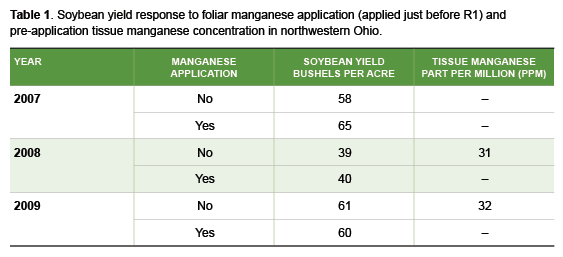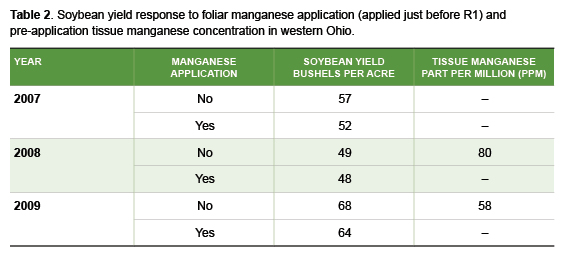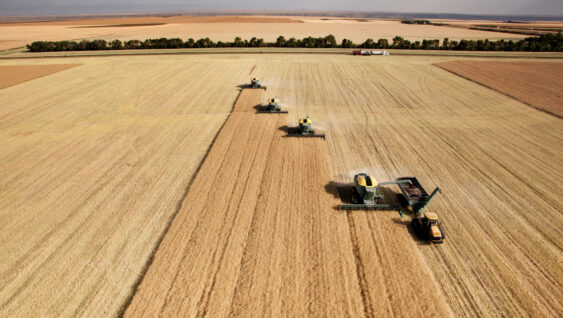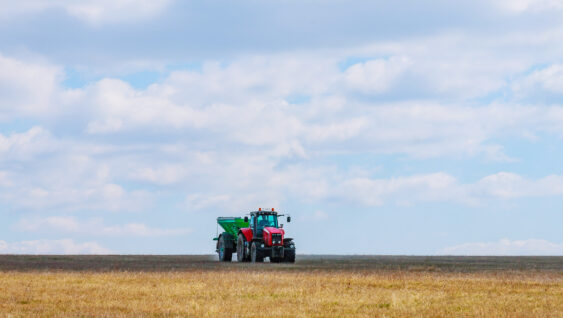Manganese in Soybeans – A Case Study in Micronutrient Use
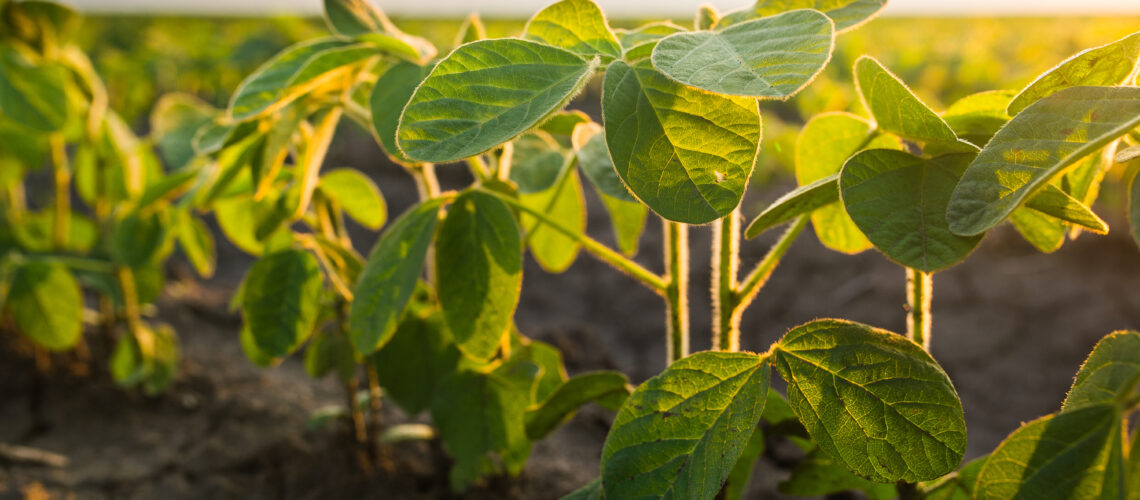
A question often asked with today’s modern hybrids/varieties and higher yields is – do I need to supplement with micronutrients more frequently? While that is certainly a good question, it is not one that is going to be completely answered in this article. The purpose of this article is to illustrate a reality of utilizing micronutrients. While they can be very important to increasing yields, their use can be a little tricky because over-supplementation can be detrimental.
The case study that will be used comes from research conducted at Ohio State in the mid to late 2000s.
The take home finding of this study is that in certain environments, foliar application of manganese can provide a yield benefit (Table 1 – 7 bushel per acre advantage in 2007). Conversely, in other environments, foliar application of manganese can be detrimental (Table 2 – 5 bushel disadvantage in 2007, and a 4 bushel disadvantage in 2009).
This finding begs the question – what is the difference between these two experimental locations? More specifically, how do you as an agronomist use some information to determine where your field(s) reside(s) with regard to risk – is there a greater risk of yield loss due to inadequate manganese or yield loss due to manganese toxicity?
Along with yield data, tissue manganese concentration was measured in 2008 and 2009, and the finding was that the baseline tissue manganese levels were dramatically different between these two locations. In northwestern Ohio (Table 1), this soil obviously has a much lower ability to supply manganese (soil pH was similar between both locations) as indicated by the low tissue level (most universities report a level around 20 as the critical breakpoint between marginal and sufficient). It is not surprising that this location can respond positively to supplemental manganese. Just as importantly, this location never showed a decreased yield associated with foliar manganese application.
Conversely, the soil at the western location (Table 2) has a much better ability to supply manganese as indicated by tissue concentration (the same varieties were planted at both locations – in case you are wondering if this is a varietal difference). At this location, the risk of yield loss due to manganese toxicity is real.
How do you use this information? While this is an isolated research finding, it illustrates a point that should be transferable to other micronutrients. Locations that are running on the lower end of the tissue concentration spectrum should have a greater chance of showing a positive response than locations that have high tissue concentrations. Locations that are running on the high end of the tissue concentration spectrum likely have a greater chance of yield decline as a result of micronutrient supplementation.
Specifically, for micronutrients, tissue sampling is a good way of determining whether or not you should consider supplementation.
